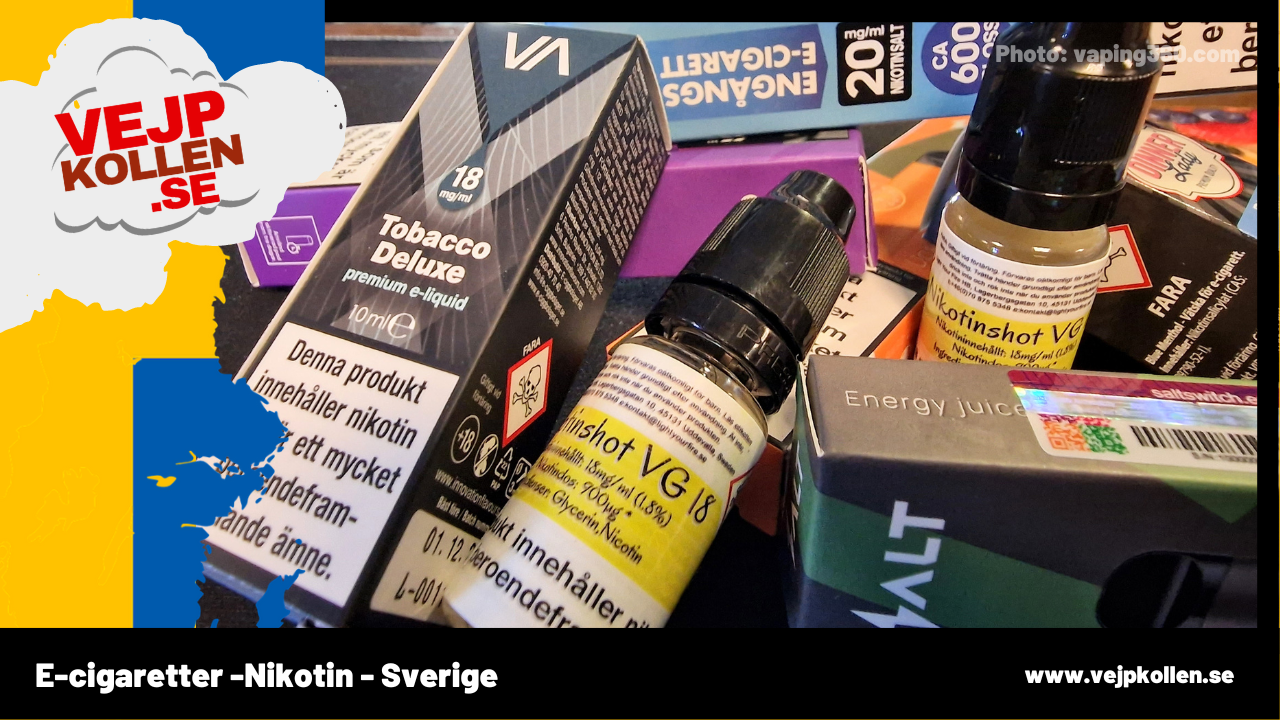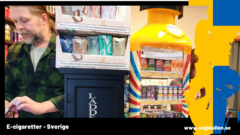Disposable vapes, highly concentrated nicotine salts, certain nicotine cones and ready-to-use e-liquids. These are products that, from 1 July 2022, will require a licence to be sold in shops or kept in stock.
But how does it work? And which products does it actually apply to?
Vejpkollen is reviewing the regulatory framework for nicotine in Sweden in 2023.
Updated article: February 2023
As vejpkollen previously reported the Swedish Chemicals Agency, under a new interpretation of the Chemicals Act, requires all sellers who transfer highly concentrated nicotine-containing e-liquids have a licence from the county administrative board. This is in addition to the usual obligation to notify the municipalities.
The new rules apply to liquids with "Acute toxicity in hazard categories 1, 2 and/or 3". Nicotine is by definition a poison and is therefore included in this category. However, the the concentration of nicotine is crucial, and nicotine is not always classed as equally 'dangerous' under laws and regulations. So what products does this actually apply to? It's actually more complicated than it sounds.
Concentration different depending on weight
According to the guidelines from the Swedish Chemicals Agency (which is based on how the product is classified according to the EU CLP register) is the e-liquid where 1.66 per cent of the weight consists of nicotine affected by the condition. However, this is more complicated in practice, as the weight depends on the composition of propylene glycol and glycerine in the e-liquid in question.
"Glycerine weighs more than proylene glycol. This means that 1.66 per cent of the weight will be different concentrations depending on whether you have a 50/50 liquid or 80/20 liquid. This is not an optimal way to measure" says Victor Bryn-Jenssen, President of the Electronic Cigarette Industry Organisation (BELC) and HR Manager at Cigge.se
"Assume that 20 mg/ml requires authorisation"
In practice, this means that a liquid with a nicotine concentration of 18 mg/ml and a pg/vg ratio of 50/50 pg/vg is a traditional nicotine shot, DOES NOT require authorisation. 18/mg per ml is only 1.62 per cent of the weight in this particular case.
For a high vg e-liquid (80 per cent vg - very viscous), even 20 mg/ml is not enough to exceed 1.66 per cent by weight. However, this type of liquid is, so far, rare on the market and Victor Bryn-Jensen therefore recommends that companies that do not have full control over the ingredients play it safe.
"The simplest approach is to assume that products with a nicotine concentration of 20 mg/ml, which is often the case with simpler disposable models and ready-to-use nicotine juices, always require an authorisation" says Victor Bryn-Jensen.
Specific requirements for nicotine salt and disposable vapours
The Swedish Chemicals Agency has not conducted a review of the new authorisations in 2022. The reason for this is the information about the suspension has not reached the public to companies and county administrative boards in time. Municipalities, which are ultimately responsible for supervision, are encouraged to follow the example of the Swedish Chemicals Agency. This allowed companies that had not previously been informed of the new rules to catch up.
Mr Viktor Bryn-Jenssen urges retailers, who have not yet done so, to quickly review their range and decide which liquids require individual licences. This is particularly true for companies that have several different types of disposable models in their range, such as Saltz switch, N-one, Vont and Frunk bar.
"Pods and single-use variants very often contain different flavours of nicotine salt. You really need to check this out. Each form of nicotine salt requires a unique authorisation," says Victor Bryn-Jensen.
The difference between 'regular' nicotine and nicotine salt
The nicotine in e-cigarettes and e-liquid comes in two flavours. Fribas nicotine and nicotine salt. Fribas nicotine (the traditional form of nicotine in an e-liquid) is quite straightforward: it is nicotine extracted directly from the tobacco plant without undergoing any major chemical change. Nicotine salt however, the variant found in most pod system and disposable e-cig, may contain residues from different types of acids. The acid is used to change the pH of the free-base nicotine and thus make the nicotine less strain on the throat when inhaled. Different manufacturers of nicotine salts use different acids, and this affects the classification in the register that the Chemicals Agency follows.
"Assume that each 20mg/ml disposable and each bottle of pre-mixed high nicotine juice has its own variant of nicotine salt. At Cigge, for example, we have five different licences for each store. But it's important to look carefully at each product and act accordingly. You can also contact trade association to get support" says Victor Bryn-Jensen
The association also plans to develop materials for retailers to learn more about nicotine and the necessary authorisations required by the Swedish Chemicals Agency.




